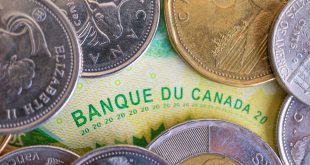Gold prices plummeted by 2.71% on Wednesday, dropping from a daily high of $3,386 to $3,287.94, shedding $91.43. The decline was driven by a surge in risk-on sentiment, fueled by hopes of de-escalating US-China trade tensions and reassuring comments from President Donald Trump about Federal Reserve Chair Jerome Powell. The shift in market dynamics pushed US equities higher and weighed heavily on bullion, as investors pivoted away from safe-haven assets.
Trade Optimism Sparks Risk Appetite
The prospect of reduced US tariffs on Chinese goods, reported by The Wall Street Journal, ignited optimism in financial markets. Although US Treasury Secretary Scott Bessent tempered expectations by clarifying that no unilateral tariff cuts were on the table, the mere possibility of a thaw in US-China trade relations boosted risk appetite. Bessent emphasized that any tariff reductions would require reciprocal action from China, leaving negotiations uncertain but fueling market speculation. This shift sent US stock indices upward, undermining demand for gold as a safe-haven asset.
Trump’s Reassurance on Powell Eases Concerns
President Trump further calmed markets by dispelling rumors about replacing Federal Reserve Chair Jerome Powell. On Tuesday, Trump stated, “I have no intention of firing him,” countering media speculation and expressing a desire for Powell to adopt a more aggressive stance on lowering interest rates. The reassurance bolstered confidence in monetary policy continuity, contributing to a modest recovery in the US Dollar Index (DXY), which rose 0.09% to 99.72. As the dollar strengthened, gold faced additional downward pressure.
Mixed Economic Data and Fed Rate Expectations
Economic data released on Wednesday painted a mixed picture. The S&P Global Manufacturing PMI for April improved slightly to 50.7 from 50.2, signaling modest growth in factory activity. However, the Services PMI fell to 51.4 from 54.4, missing expectations of 52.8 and highlighting weakening demand in the services sector. Meanwhile, US 10-year Treasury yields rose two basis points to 4.371%, and real yields on Treasury Inflation-Protected Securities edged up to 2.099%, reducing the appeal of non-yielding assets like gold.
According to Prime Market Terminal, traders see a 94% probability that the Federal Reserve will maintain current interest rates at its upcoming meeting. Looking ahead, markets anticipate the Fed funds rate to settle at 3.45% by year-end, implying 92 basis points of easing. This cautious outlook, combined with rising yields, further pressured gold prices.
Technical Outlook: Gold Pulls Back but Retains Bullish Bias
Despite the sharp retreat, gold’s longer-term outlook remains constructive. XAU/USD is trading below $3,300, but the yellow metal holds above key support levels. For bearish momentum to gain traction, sellers would need to push prices below the April 3 peak of $3,167, potentially targeting the 50-day Simple Moving Average (SMA) at $3,032. On the upside, a recovery above $3,300 could pave the way for a test of $3,400, with $3,450 as the next significant resistance. The current pullback appears corrective within a broader bullish structure.
What’s Next for Gold?
Gold’s near-term trajectory hinges on developments in US-China trade talks and upcoming economic data, including Durable Goods Orders and the University of Michigan Consumer Sentiment final reading. Federal Reserve speakers’ commentary will also be closely watched for clues on monetary policy. While improved risk sentiment and a stronger dollar have driven gold lower, persistent uncertainties in global trade and geopolitics could limit further declines, keeping bullion’s safe-haven appeal intact.
 Noor Trends News, Technical Analysis, Educational Tools and Recommendations
Noor Trends News, Technical Analysis, Educational Tools and Recommendations





